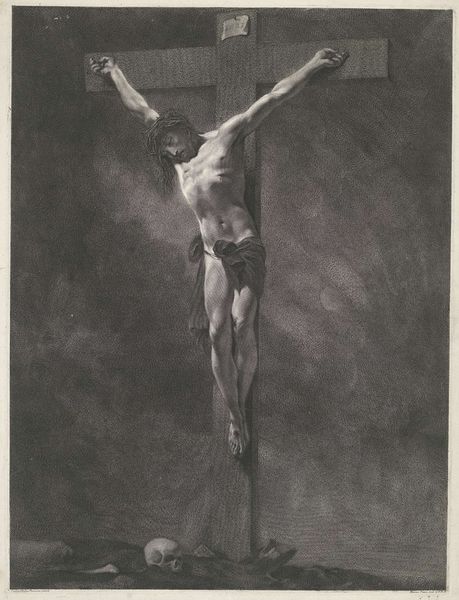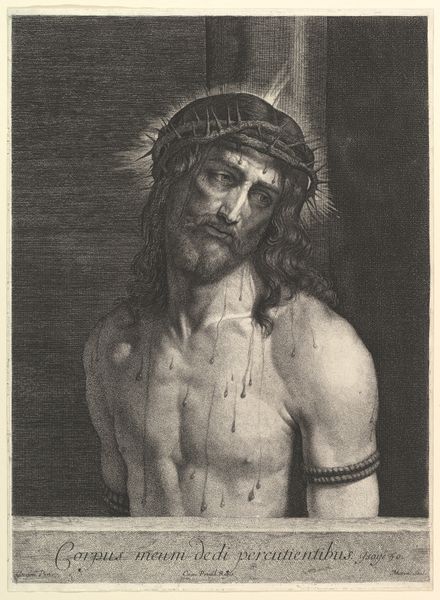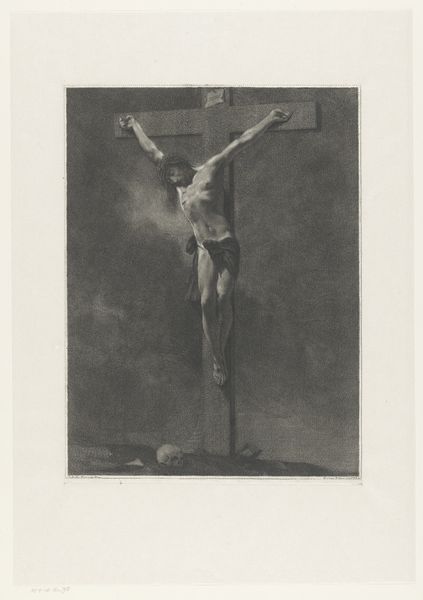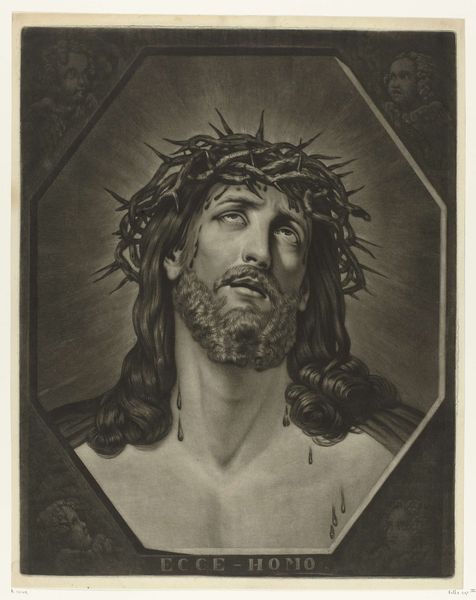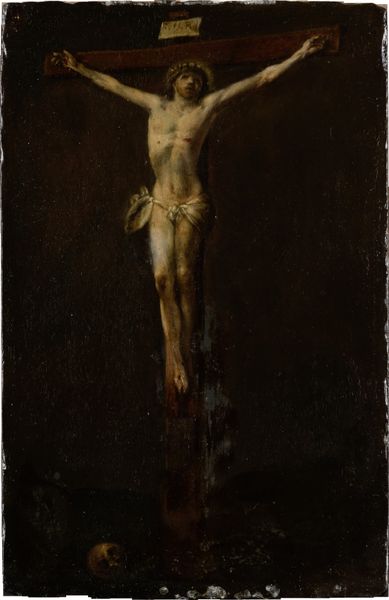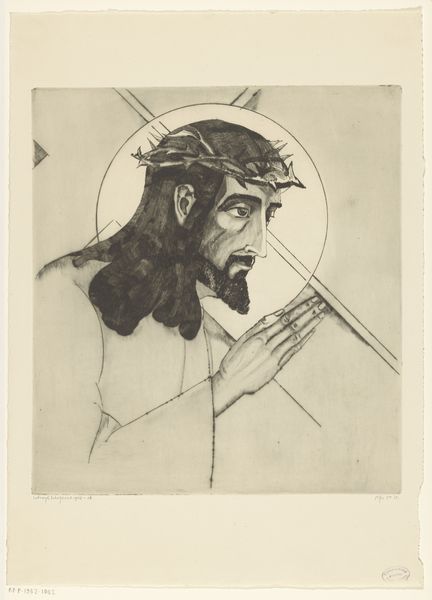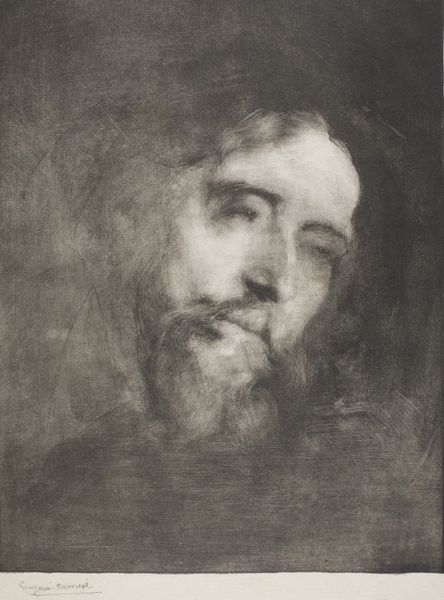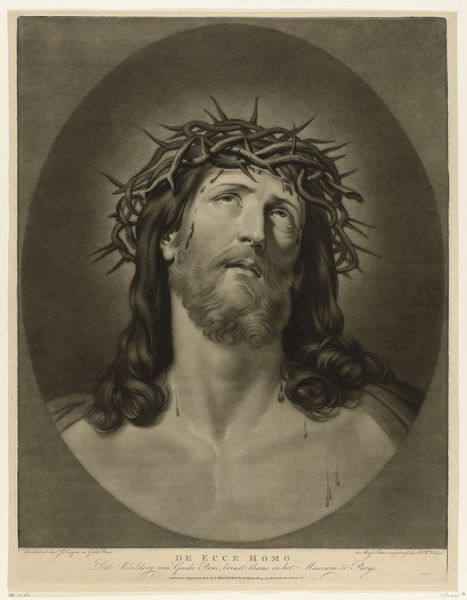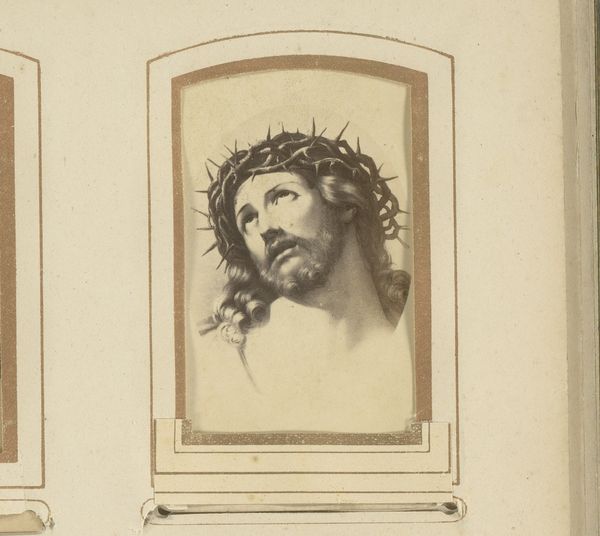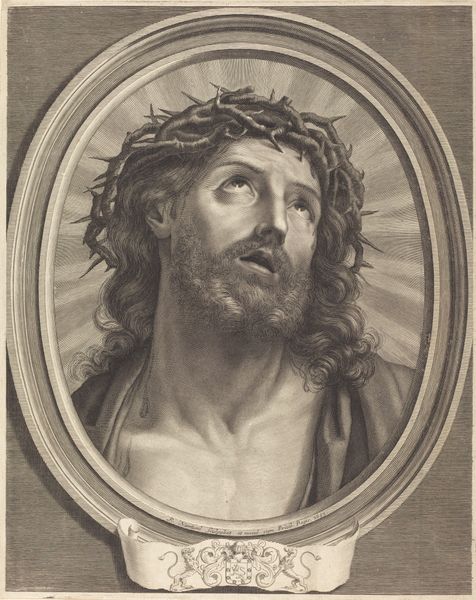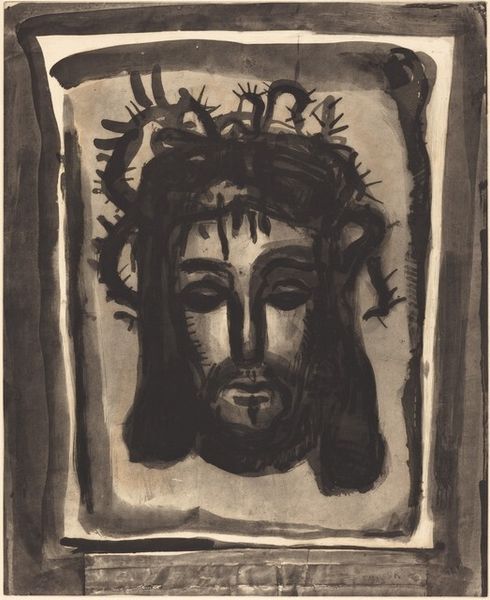
print, photography, gelatin-silver-print
#
portrait
#
pictorialism
# print
#
photography
#
gelatin-silver-print
#
symbolism
Dimensions: 13 × 11.7 cm (image/paper); 18.2 × 17.3 cm (first mount); 35.5 × 27.9 cm (second mount)
Copyright: Public Domain
Curator: Looking at this gelatin-silver print, F. Holland Day's "Study of Head of Christ," made in 1898, the first thing that strikes me is its overwhelming solemnity. Editor: Absolutely. The tonal range is tightly controlled, mostly in grays, emphasizing the dramatic chiaroscuro, really pushing forward the symbolic weight, even of what could be a standard portrait. Curator: Indeed. Pictorialism, of which Day was a key proponent, embraced photography as high art through manipulation of the image. Here, we see a deliberate softening of focus and a stark emphasis on light to generate a powerful atmosphere. One almost feels as if this is not just a photograph, but something verging on spiritual icon. Editor: It's fascinating how Day is referencing familiar iconographic representations, then, with this modern photographic method, recontextualizing and recasting them for his contemporary audience. Curator: We can also consider Day’s interest in performance and staging. His re-enactment of the Passion of Christ and subsequent photographic record, of which this image is a part, challenged artistic conventions. Editor: Challenged and reinforced them. The intense public reception reveals society's grappling with new modes of religious expression and the evolving place of photography within this conversation at the turn of the century. The composition, particularly the upward gaze, forces viewers to meet a gaze that embodies both pain and divine appeal, evoking strong empathic reactions. Curator: Day was pushing the boundaries, wasn't he? His explorations helped open up avenues for artists seeking more fluid means of depicting religious figures and narratives. What are your thoughts on the enduring nature of this type of image? Editor: Its enduring appeal perhaps lies in its ability to engage directly with emotions about faith, suffering, and redemption, and even if it doesn’t elicit direct recognition for audiences today, I still feel drawn in. Curator: A fusion of visual form and complex historical and social undertones certainly provides continued exploration for anyone who stands to appreciate this beautiful piece of religious and artistic history.
Comments
No comments
Be the first to comment and join the conversation on the ultimate creative platform.

